My sit-spot is a mini clearing beside me is the library on the other side is the library parking lot which exits onto the loop, which is East Campus Drive. Then to the back of me is a mini-woods which behind that is the rest of the loop. In front of me is a little walkway that leads to the bridge that crosses over the stream and leads to East campus drive as well as the backside of the theater, allowing you to see all the way up to the library annex. But coming back to my little area of grass directly across from the bridge just in between two lamp posts.
During my quiet observation time I got to hear other things other than the hissing of the cicadas, which is what I am most excited about because there were tons of sounds that I did not notice. What took place of the cicadas though was the crickets, although they were not as loud, but still noticeable. Another powerful sound I was able to hear was sort of like a humming, almost like the one you would hear coming out of a factory,instead it was coming from the theater. But despite all of those pretty powerful noises, I was able to hear multiple songs of birds, which was really peaceful, because I never really get the chance to actually listen to the birdsongs, it’s always just something you hear in the background but never something that you really listen too, again this blog and this quiet observation really brings you closer to nature, and I really value this time. I think during this observation I really focused on the sounds I was hearing, which was really peaceful, but was still able to observe some things.
Things that I saw during my quiet observation, coincided with the sounds I heard like the different birds that darted across the sky. Thanks to our hawk lab I was able to identify a black vulture that was flying very close to the ground directly above the stream. I knew it was a black vulture due to the silver flashes on the bottom tips of their wings. I wondered what dead thing it was flying too. Other birds flew by, but I was unable to identify them but it allowed me to look into the sky and enjoy the beginning of the sunset, with all the different shades of orange,pink, purple, and yellow.
For my three things that I have decided to follow throughout the semester, none of them really changed except for the stream. The change in the stream was very slight but noticeable, last week the stream was bone dry, dirt cracked lacking water. This week there was some moisture but that was probably because it had rained the previous day, that slight moisture added a little patch of mud.
During the time I was able to walk, I decided to look closely at two plants. One of these was this growing seedling for a tree or bush, in sure which I saw a slightly more mature one across from it, not 100% sure that they are the exact species but they look very similar. But this seedling had a very thick trunk as well as red berry like fruit hanging from it some fallen onto the ground. It was a very similar looking plant to Winterberry Holly, but I do not think this is the same species. I chose this plant because of the colors and it was kind of an awkward looking bush and awkward things intrigue me because I am kind of awkward.
The second thing I chose to look was another plant. It looked kind of like an animals home which is why it caught my eye because I was like oooh who/what lives here. Plus I also think it was kind of just a good resting place for other animals. For example, I got to see a really pretty cardinal being chased by a grayer less red bird. This was a mangrove looking manifestation along the bed of the creek, it looked like it could have been the home of a groundhog or some other land and water. It was a messy nest type of contraption. If I hadn’t taken the time to actually go around and really look at these two plants I probably wouldn’t have noticed the different habitats that these two plants provide. For example, the seedling one I think is a great host for bugs, especially spiders in stuff to make their webs, because since it was so short and close to the ground it allowed the spider’s web to be closer to the ground, thus allowing it to capture more bugs. Also with the mangrove thing, it was probably a good hideout and home for small rodents who are trying to get away from predators, it provides enough coverage and protection for them.
For the walking around my site aspect, it was not something I typically enjoyed. I feel like sitting and observing is much more helpful and I feel like you are able to pay more attention to detail. Which I kind of find is the whole purpose of this activity is to really pay attention really listen to things that are close by. Also with sitting I’m able to position my body in any direction and look at any being. Plus I feel as we continue to observe out three things we will have to get up and really examine those. So no I do not think I would have done this on my own,because I am already further examining my three things over the semester.
All of my adaptations included non-plant organisms. The one that I was able to get a picture of is that of the spider web. Spider silk is clear, thin, and durable. On my small seedling, I noticed this particular adaptation of the it being so clear and thin and almost invisible, its to get catch more prey. On the web it was completely covered with nats but no spider in sight, because it allows its prey to be tricked into thinking it’s just open space, when it is really a trap. Another adaptation I noticed had to do with squirrels. In the trees you here the squirrels jumping from branch to branch and making noise within the crown, but you never actually see them until they come down the trunk onto the ground. I feel as this is an adaptation of camouflage. Their fur is that brown greyish color to help them better blend in with the tree, to avoid predation, especially since trees are their primary habitats. The last organism that I was able to observe an adaptation for was a monarch butterfly when it lands on a leaf it dulls its bright orange color to a less bright color. I assume this occurs to again avoid predation also not to be confused as flowers for pollinators. I really wanted to take a picture of this one because I thought it was super cool and pretty but it wasn’t on the leaf for very long and I did not have my phone.
Spotting out these adaptations were pretty easy because I found them before I got to the question of finding them. For the butterfly, I experienced it while walking around my sit spot, and with the squirrels I heard and looked for them during my 15 minute quiet observation. Then the spider web was on the seedling bush I was closely examining. I believe it was easy for me to see them because I wasn’t actively looking for them they kind of came to you as you paid attention, which I think was probably a goal for this sit spot session.
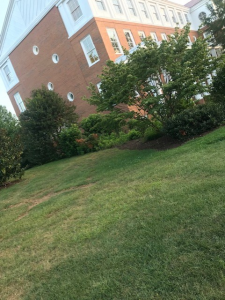
Sit spot during second sit in
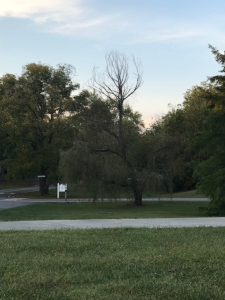
Mossy tree during second sit session

Bush tree during second sit session
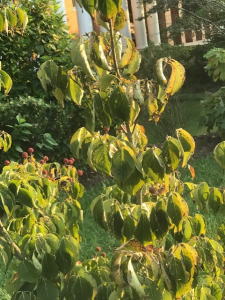
Spider web adaptation, very hard to see but if you look closely you can see al the knats
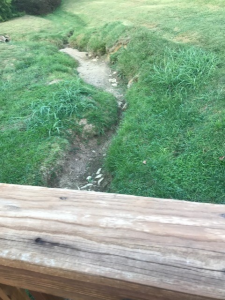

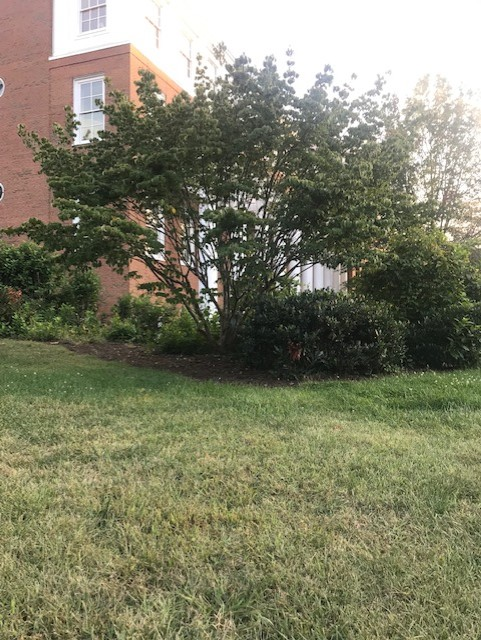
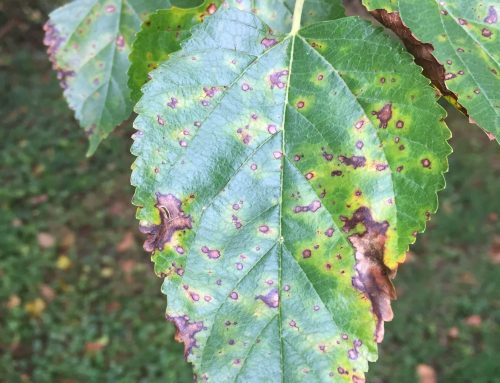
Wonderful post! I wish I knew your name so I could address you directly, I’m sorry. However, I like that you mentioned the identification of the Black Vulture you witnessed. The Hawk lab was defiantly an unforgettable experience; I still find myself identifying turkey vultures pretty much wherever I go. You’re picture were very helpful in placing your sit-spot on the map, mentally.